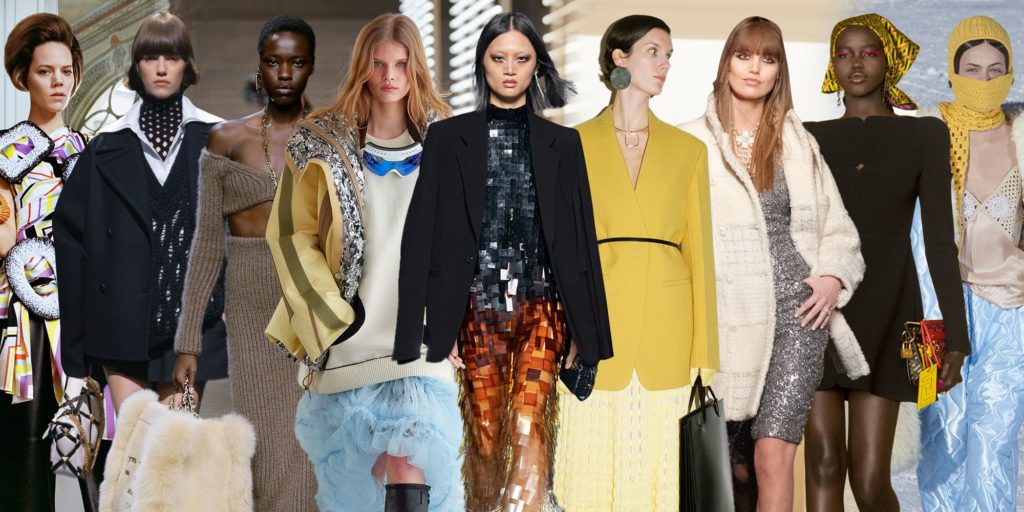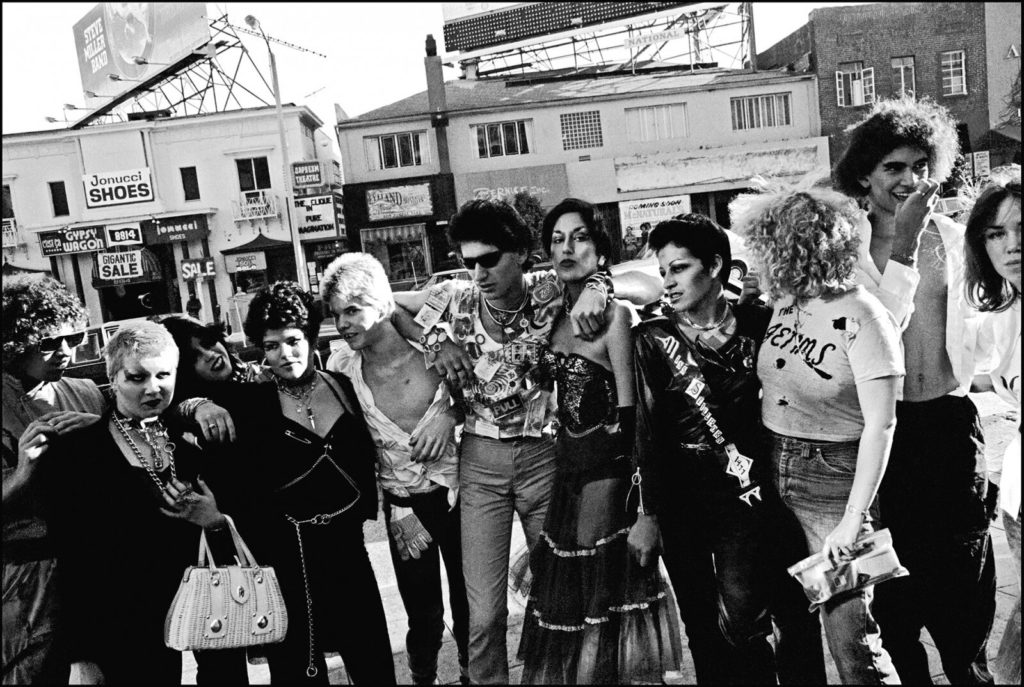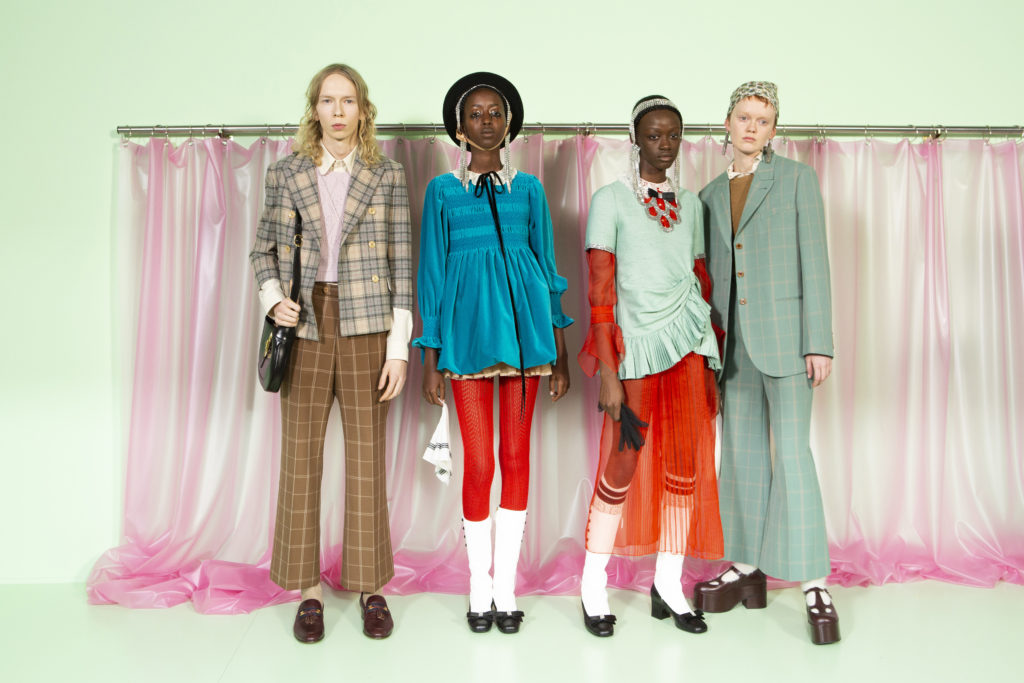The Trend Decline: Aligning Our Wardrobes With Our Values

The pandemic has unified society in many senses. For one, it has increased people’s desire to contribute to the greater good. This behavioural change has greatly impacted what consumers are willing to spend their money on. From boycotting brands with less than liberal social views and shining a spotlight on companies with bad business practices, to valuing high quality, timeless pieces that will create a sustainable wardrobe, the view on clothing is beginning to shift.
Many brands are now being forced to adapt their businesses to appeal to the new consumer view. There has been a decreased interest in trend-driven items with people instead moving towards timeless products. Customers are shopping with a purpose. As well as an interest in the environmental practises of companies, there’s a growing interest in brands and projects which prioritise inclusivity, diversity, and charitable practises. We want to buy from brands whose values reflect our own; the new approach is shopping with a conscience.
Conscious shopping means more than justifying a purchase by weighing the environmental impact of the item with your absolute need for it. The understanding and appreciation for the clothes we spend money on will create a noticeable shift in consumer behaviour. There will be an emphasis on buying for the long term. Thoughts on an item’s ‘trendiness’ will be replaced with an interest in how and where their clothes are made, the credentials of the designer and the story behind the style. Shoppers will choose to invest in a piece because of its story, its craftsmanship, and the special place it will hold in their wardrobes – no longer will we buy in a vague attempt to look cool. It has become impossible to ignore reality and consumers will continue to alter the way we shop to better align our wardrobes with our values.
Thanks to the shift, trends appear to be going, well, out of trend. Longevity, one of the core principles of conscious shopping, directly opposes the ever shortening trend cycle and the poor-quality items pushed out by fast fashion brands attempting to keep up-to-date with what’s ‘in’ and what’s not.
To replace trends, conscious shoppers are turning to ‘seasonless fashion’. Seasonless fashion encapsulates the exact opposite values to fashion running under the trend cycle. Seasonless pieces are designed with longevity in mind, favouring styles that aren’t immediately identifiable as being from a specific collection or season. These are timeless, well-made, versatile pieces that won’t become ‘dated’ and can be worn flawlessly between seasons.

The first image that comes to mind when thinking of ‘seasonal fashion’ may look dull or boring with muted colours and simple silhouettes. But a really great example of seasonless fashion to look at is punk. Punk has been around for decades upon decades and has seen yet another rise recently through the ‘e-girl/boy’ look and the celebrity pairings of Travis Barker & Kourtney Kardashian and Megan Fox & Machine Gun Kelly. The look is versatile, it doesn’t drastically change season to season, it doesn’t even drastically change from year to year. The punk ‘look’ has a staple idea for what should encapsulate a wearer’s wardrobe, but most importantly for the punk, what you wear reflects your values; whether that’s donning the anarchy symbol on your t-shirt or proudly showing off items by local designers.
Seasonless fashion doesn’t look the same for everyone. It’s not an aesthetic, it’s an idea. So how exactly will this switch to seasonless fashion manifest in our daily lives? We can expect to see additional focus on the practicality, usefulness and longevity of an item’s design. Brands will be forced to consider more than the aesthetic appeal of their clothes and consumers will be rewarded with higher-quality and more versatile clothing choices. Designers will still offer up collections that are uniquely their designs, but instead of items being impacted by the ‘it’ style of the moment, creative directors will share pieces that can stand the test of time.
With conscious fashion’s rise in popularity, many companies have turned to greenwashing instead of making a real effort to change. These brands are relying on consumers blind trust. For example, H&M’s conscious collection is sold as ‘sustainable’ when really their materials create hundreds of litres of water waste and are sewn together in slum factories rampant with unfair pay and poor working conditions. As consumers wake up, companies who fail to make real efforts while claiming to be participating in sustainable practices, will fail.

Seasonless fashion is already having a major impact on the fashion industry, specifically the fashion calendar and the all reigning fashion event – Fashion Week. Fashion Week impacts the seasons of the fashion calendar entirely, encouraging brands to release new collections every couple of months to dictate what fashionable society should be wearing each season.
Fashion Week originated as a biannual event where designers could showcase their creativity. But soon the event evolved to demand a plethora of collections that could cater to different seasons and the rigorous events have now pushed brands to manufacture more clothing than their clientele can feasibly consume. Almost 80% of the total production for these brands is destined for landfills and it personifies the truth that the seasonal model is outdated and unsustainable.
Some brands agree that we are in need of dire change. Brands like Gucci, Burberry, and Saint Laurent, have already deconstructed their seasonal calendar and will only showcase collections twice a year instead of their usual five shows. Pyer Moss have taken it a step further and have pledged to only release and showcase a single, versatile collection once a year at most. If the rest of the industry follows suit and goes seasonless, brands will have the time to make collections that truly work for their customers.
We all love seeing crazy stuff coming down the catwalk on impossibly stunning models, and seasonless fashion doesn’t have to change that. Seasonless fashion doesn’t mean that these shows will stop, it will force them to become better. Taking away the influence of trends, and removing the worry of selling a tonne of items by following what’s trendy, will heighten the creativity we’re seeing on the catwalk. Seasonless fashion will encourage designers to be unhinged, enhance their creativity and show us something we’ve never seen before rather than showcasing interpretations of trends we’re already seeing everyday on social media.
The constant bombardment of new seasonal collections not only overwhelms consumers with choices, but also makes clothing highly disposable. But seasonal fashion won’t stop trends in their tracks, they will inevitably still pop up and influence how we dress. Certain designs will still become hugely popular, but instead of buying low-quality dupes with the aim of looking ‘on trend’, the focus will be on the longevity and versatility of the item. Trends will be incorporated into people’s personal style and will outlast the trend cycle we’re currently running under.

Priorities are changing. We want to invest in beautiful, joyful, mood-boosting fashion that makes us feel good as well as look good. We’re gaining a new level of appreciation for the creativity, time and work that goes into clothing and we will treasure these designs for longer. Or will we? There are those who argue that seasonless fashion is merely the latest trend. It’s trendy to be trendless and soon we’ll be over it. So, are we heading for a trendless future, or is trendless fashion simply the latest trend?
Discover more from GUAP’s Fashion section here





![ZINO VINCI’S ‘FILTHY & DISGUSTING’EP BRINGS YOU TO THE CORE OF THE ARTIST [@ZinoVinci]](https://guap.co/wp-content/uploads/2023/10/Zino-4.jpg)



